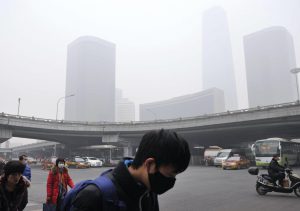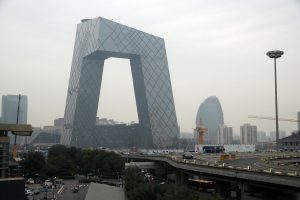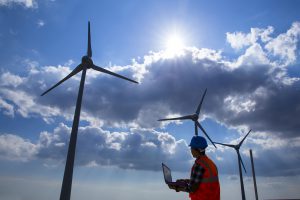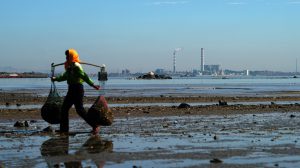Much of northern China was still enjoying a crisp, clear sky at the start of 2018, the fruit of a massive, last-ditch effort to meet an air quality target set for the end of 2017. As a result, Beijing's PM2.5 level was 35% lower than five years ago, an outcome that many thought was impossible.
It was so stunning that researchers declared that China was winning its war on pollution. The government had once again demonstrated to the world that it could get things done. But the blue sky exacted a hefty cost. In the rush to improve air quality, factories were shut, heating services were disrupted and, in some places, poor people were left in cold homes due to a botched coal-to-gas heating campaign.
The annual meeting of the National People’s Congress (NPC) in March marked the apex of a years-long reform process to improve environmental governance. The concept of “ecological civilization” was enshrined in the constitution and a major ministerial reorganisation was announced to help consolidate environmental protection and natural resources management. These long-awaited moves all suggested that China was on track to achieve “ecological rejuvenation”.
China's environmental reforms in recent years have always been premised on the continued transition towards a more sustainable economic model. The shift from polluting heavy industries as a growth engine is widely credited to have significantly decreased coal consumption, a major source of emissions. Optimistic voices asserted that Chinese economic growth was effectively decoupled from coal consumption.
This notion was soon put to the test after the end of the successful NPC meeting when the US announced tariffs on Chinese goods worth hundreds of billions of dollars, with China responding in kind. Prolonged negotiations failed to break the standoff.
As prospects for the Chinese economy worsened, talk of stimulating it with yet another round of debt-driven infrastructure spending re-emerged, though with some resistance. In the past, similar efforts injected enormous amounts of cash into cement, steel and other high-carbon industries, buttressing growth but at the cost of ballooning local government indebtedness and pollution. In the face of economic headwinds, it’s possible China may loosen up its once celebrated environmental policy in the coming year.
Over the summer, China published a new three-year action plan on air pollution that refrained from introducing new binding targets beyond those set in existing policies. This was a major departure from the stringent targets of the previous plan, which required too much too soon from many cities.
When the central government released a detailed North China air pollution plan for the 2018-2019 winter, a narrative was quickly established that it had taken the US-China trade war into account. The plan gave local governments more flexible control over local industrial facilities. It allowed them to determine which factories could operate and which ones would be shuttered in response to the spike in pollution over the winter months. This decision making would be based on their environmental performance compared to their peers. In the past, a blanket shutdown was imposed on such factories during winter months, with no regard to individual factories’ environmental performance.
By the end of November, China’s notorious smog was back in a big way
Central government officials disputed vehemently that the change was a response to the trade war. They argued that enterprises which invested heavily in meeting environmental standards were forced to halt production along with more polluting facilities. The change was a reasonable correction to heavy-handed government rules.
But the results cannot lie. By the end of November, China’s notorious smog was back in a big way, with pollution levels 10% higher than the previous year (they were supposed to go down by at least 3%). Satellite images and other public information suggest that shelved coal power projects have been allowed to restart.
Environmental policymaking in China happens in a complex economic and political context in which multiple imperatives must be juggled. Maintaining a reasonable level of economic growth is important, but in recent years, the top leadership has shown itself willing to accept slightly lower growth in exchange for higher quality growth. The economic restructuring in the past few years that cut capacity in heavy industry is a reflection of that new commitment to sustainability. But there might be a limit to that ambition; it is unclear if the shock of the trade war has already changed the calculation to favour unchecked growth.
But there is another policy imperative that’s often underappreciated: the need to reform the government to reduce red tape and arbitrary regulation. In September, China’s former finance minister Lou Jiwei made a veiled criticism of the heavy-handed disruption of business activities in the war against pollution when he spoke publicly about the importance of “environmental protection to respect contractual spirit”. It is not the first time that the two imperatives clashes in the environmental field. In 2016, the reform of China’s environmental impact assessment (EIA) process removed the requirement to have one before a project’s feasibility study was approved. Supporters hailed the move to allow the two approvals to be done in parallel as an effective means of reducing rent-seeking (the prerequisite for an EIA could be used by environmental officials as leverage to extort applicants) while environmentalists lamented it as a weakening of the environmental agency’s already marginal power.
No matter which imperatives Chinese leaders are responding to today, by the end of 2018, it was clear that environmental gains from the past few years were being reversed. The country’s carbon emissions are set to increase by as much as 4.7% year-on-year. Environmental journalist Li Jing lamented on Twitter: “Last winter turned out to be an outlier”.
So, have events in 2018 shaken the foundation of China’s environmental reform agenda? China and the US agreed a truce on their trade war at the recent G20 summit so there is hope that pressure to weaken pollution controls will ease. China was constructive at this month’s climate talks in Poland, and its new sweeping soil pollution control law also suggests it is still committed to moving toward greater ecological responsibility. This commitment will be tested again in 2019, but at the very least, 2018 shows that the once inconsequential environmental policy has become so engrained in China’s economic performance that tightening or loosening it would affect the country’s economic bottom line. The environmental reform has moved green polices to the centre of Chinese politics. There is now a great opportunity to have a robust and open debate about how China should align ambitious environmental targets with other pressing economic and social imperatives.








